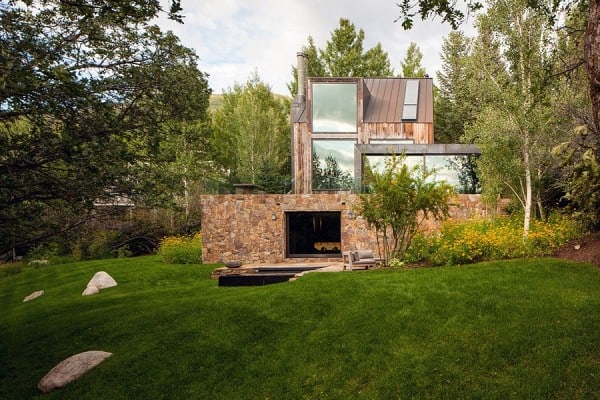
Trying to blend in with the beautiful landscape, this stunning Aspen, Colorado house was built with 300-year old recycled barn wood, locally sourced quarried stone cladding and enormous picture windows by Chad Opeenheim of Opeenheim Architects. Owner of this 3,200 square foot vacation house nestled on a quarter acre of land with a stream meandering through it; Opeenheim purchased the home for $3 million, which was built in 1971. In the interior the architect used invisible doors, fixtures, door openings and drains. Achieving this look, he used unframed doors and doorknobs that are narrow bronze strips, known as “knife-edge pulls”, which both seem to disappear. The light switches are also minimal, and the drains have narrow slits in the bottom of the sinks. The renovation cost $2 million, with four bedrooms for his wife and two young children. The home features five floors, which are mostly split-levels, creating a sense of intimacy. Some of the windows are as high as 14 feet, boasting views of the mountains, stream, and garden. The furnishings have also been minimally designed with a neutral color scheme of mostly gray, taupe, black and white, all hues that do not compete with the exterior landscape.
Most of the floors in the house are split-levels, creating a sense of intimacy.
The sofas are slipcovered in white during the summer, and gray during the winter.
Like the architecture, the furnishings are intentionally low key.
The library, which is tucked behind the dining area on the third level, is furnished with 19th-century French industrial steel chairs and shelving where artifacts collected on trips to Japan and Cambodia are displayed.
The abstract art in the dining area is actually moss.
Windows inserted between beams in the kitchen let in extra light.
The architect does not like visible light fixtures, so the staircase is lighted with concealed cove lights.
Oppenheim’s bedroom on the top level of the house is furnished simply.
The sink in the master bathroom is made of locally quarried stone, with nearly invisible drainage slits at the bottom. The cabinets are built out of 300-year-old barn wood.

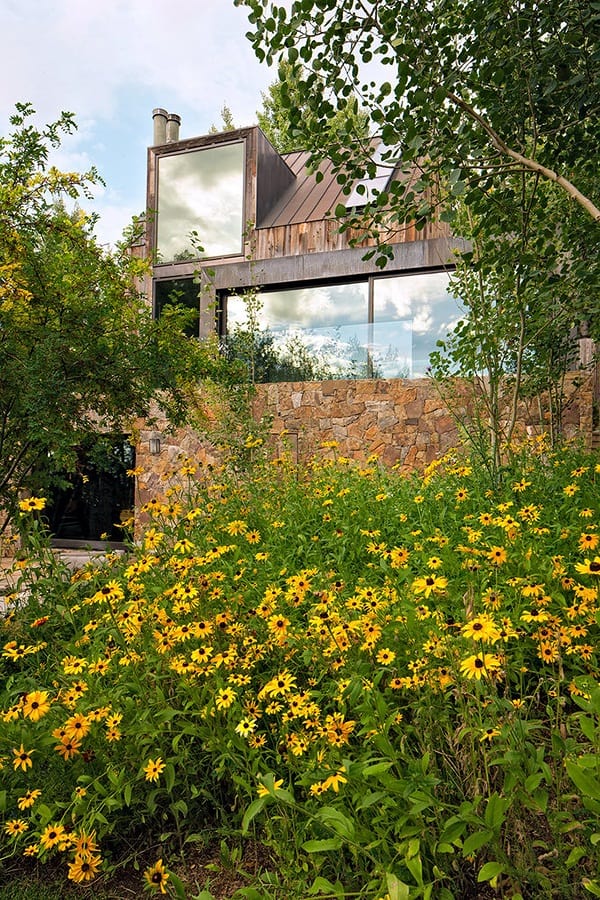
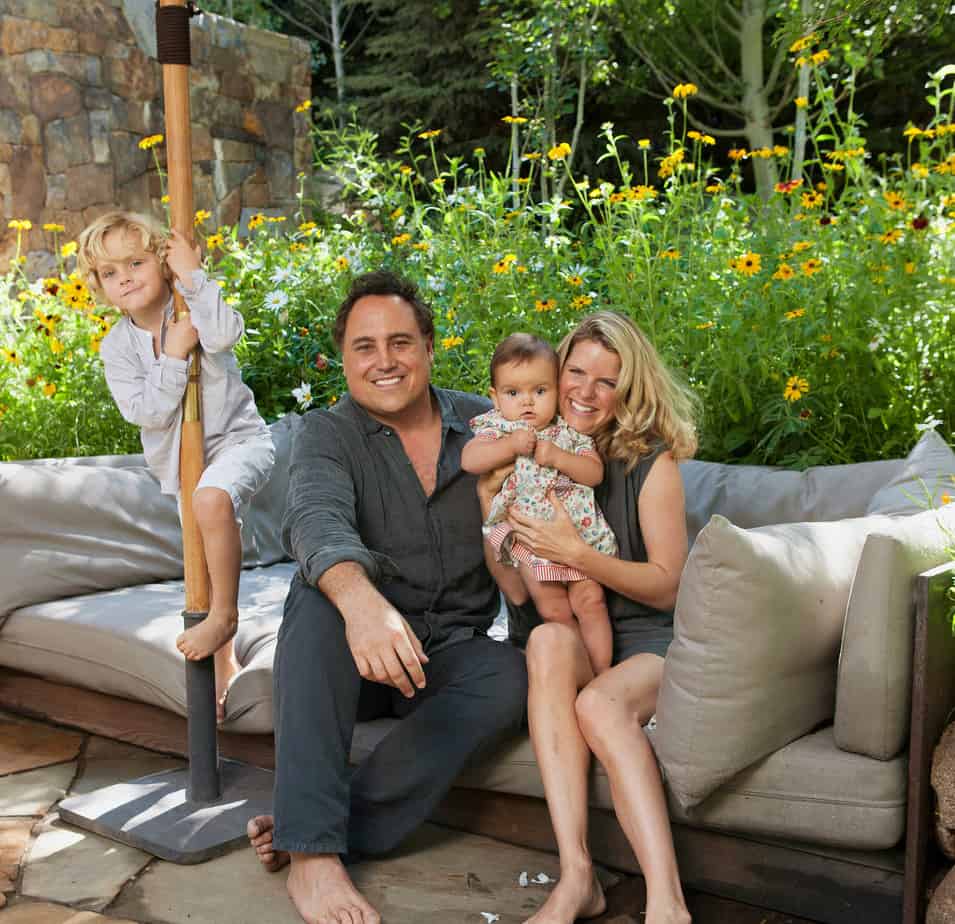

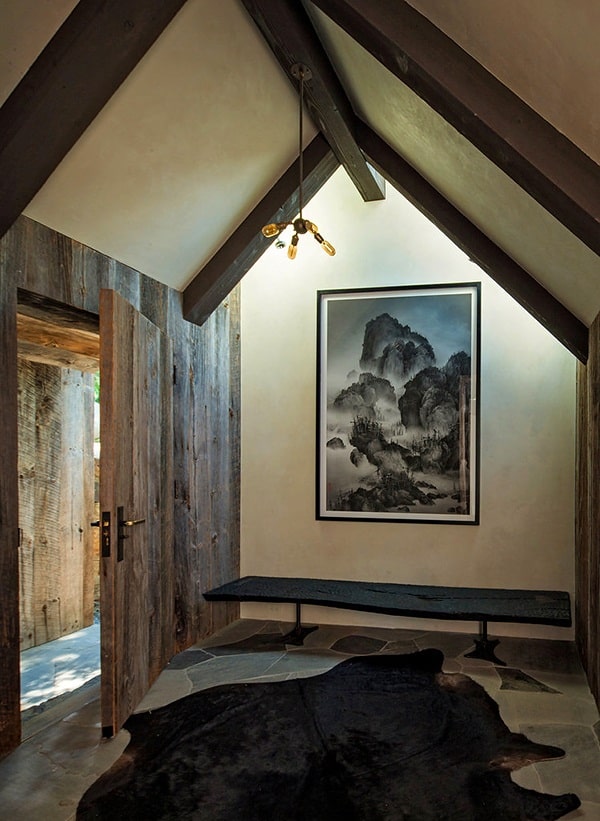
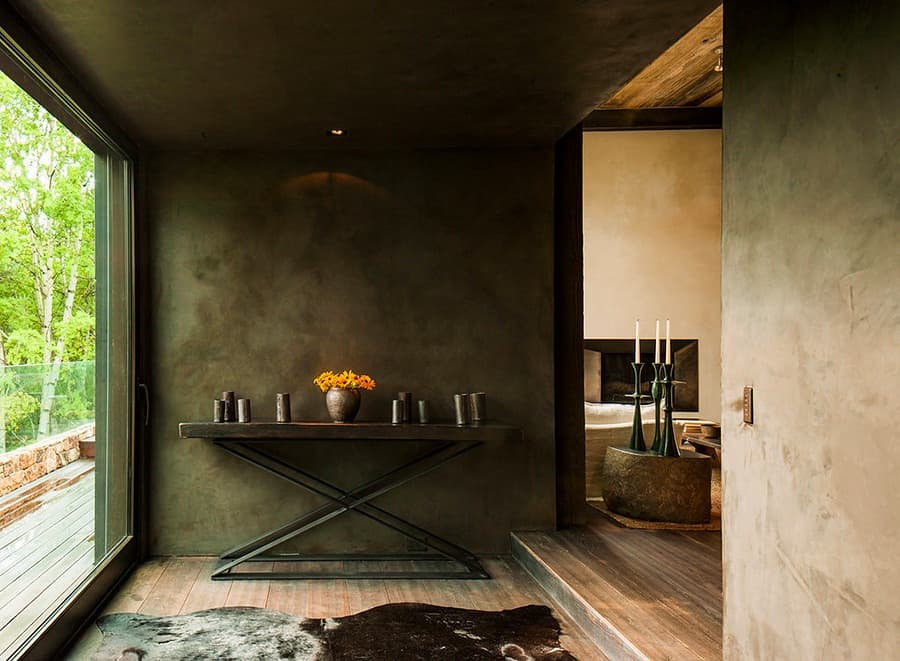
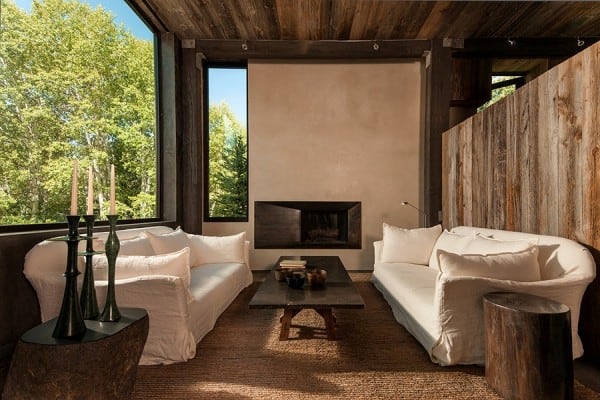
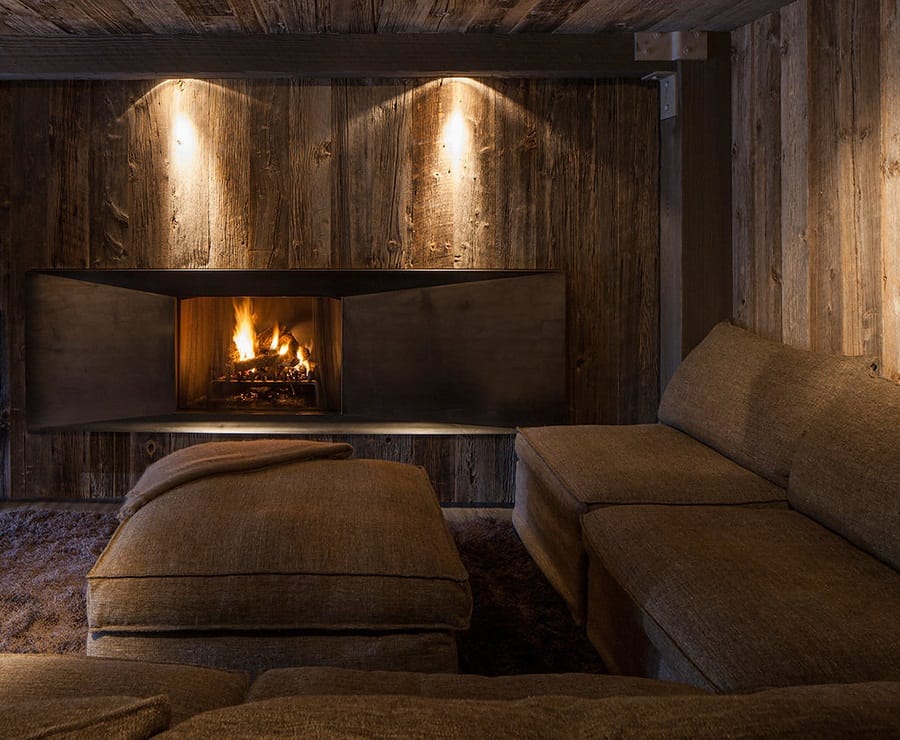
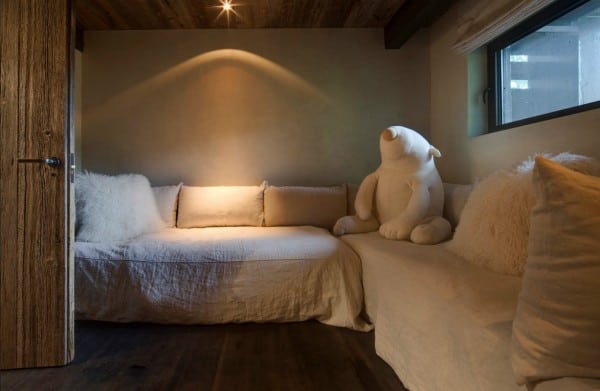


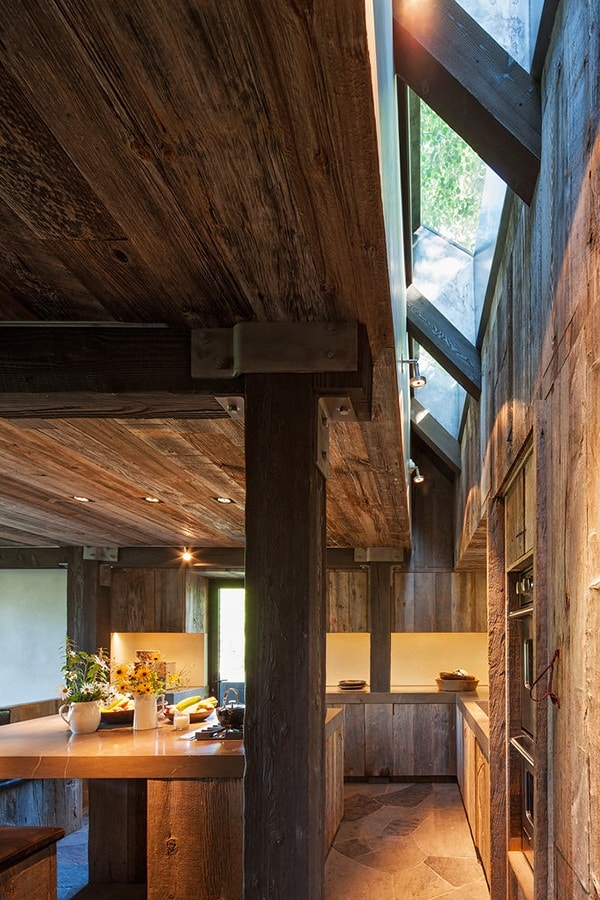
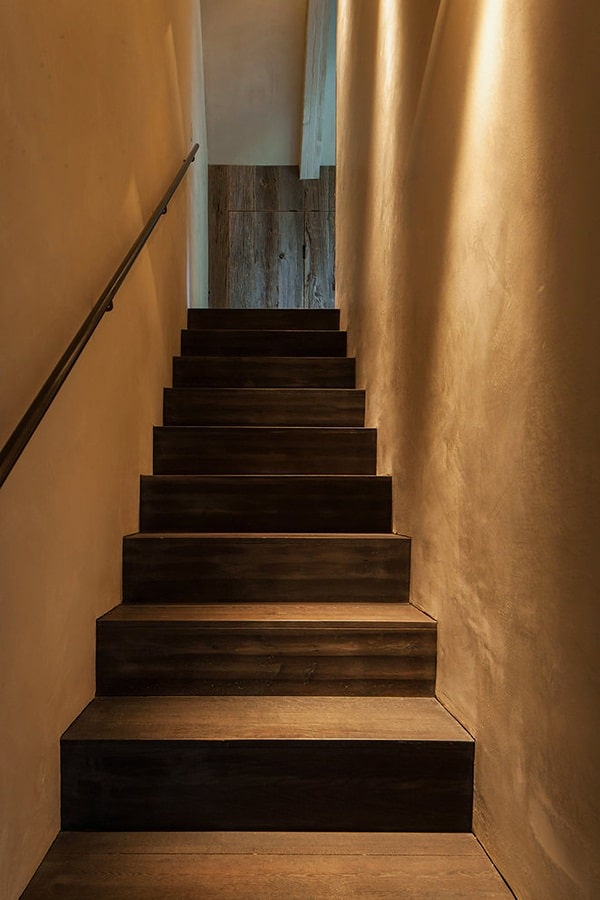
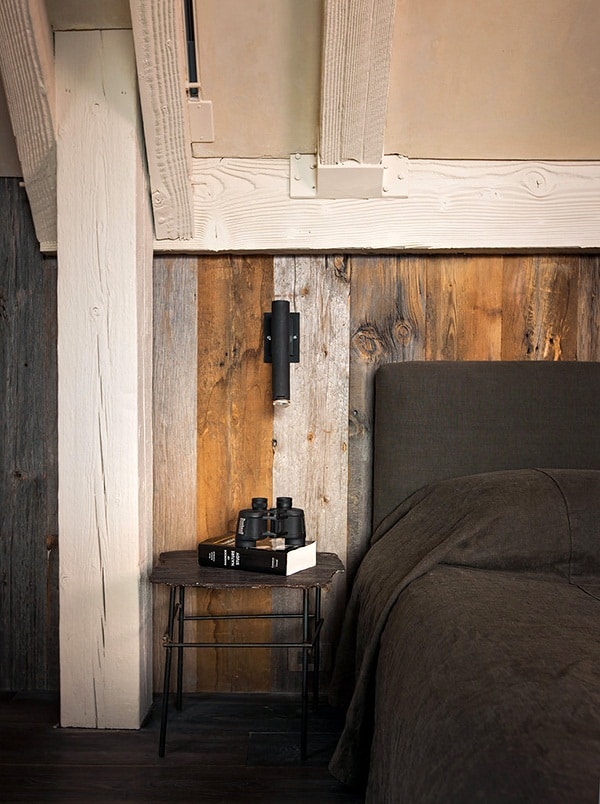
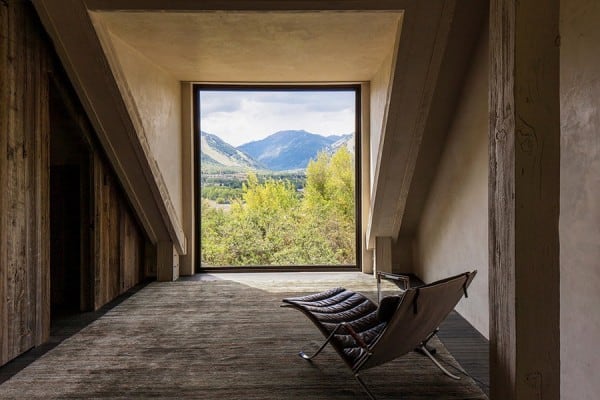
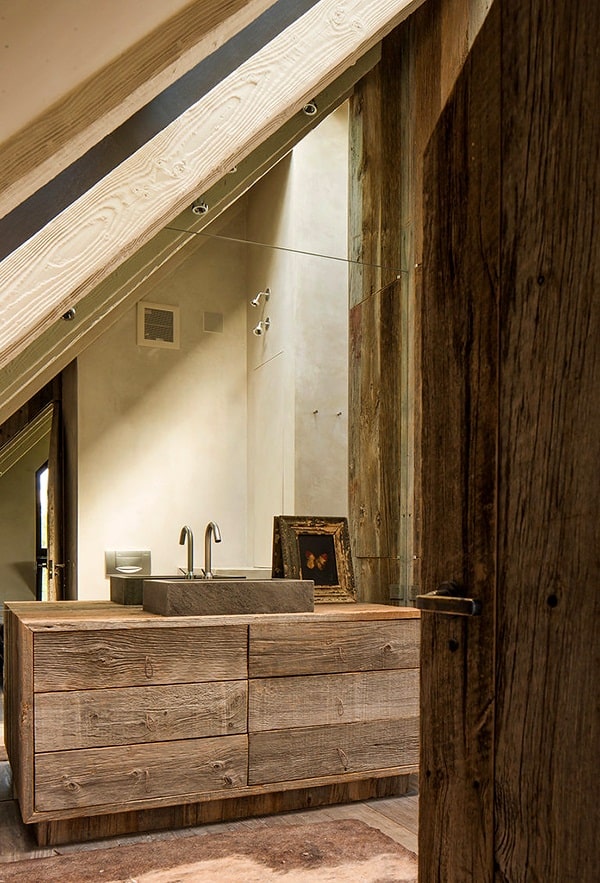
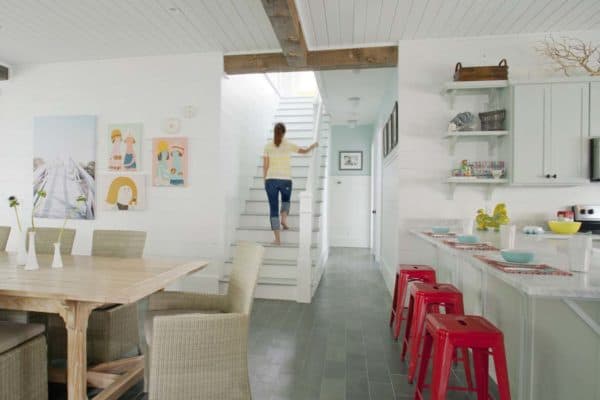
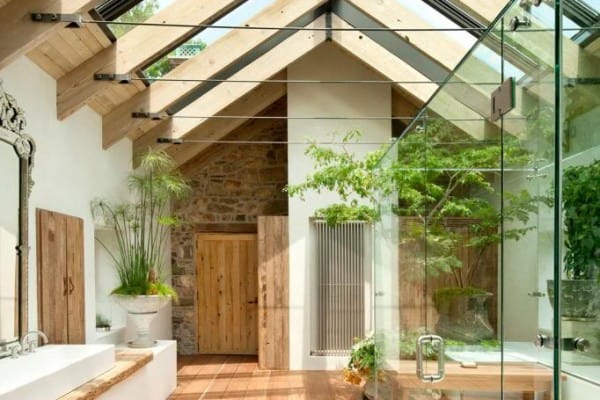

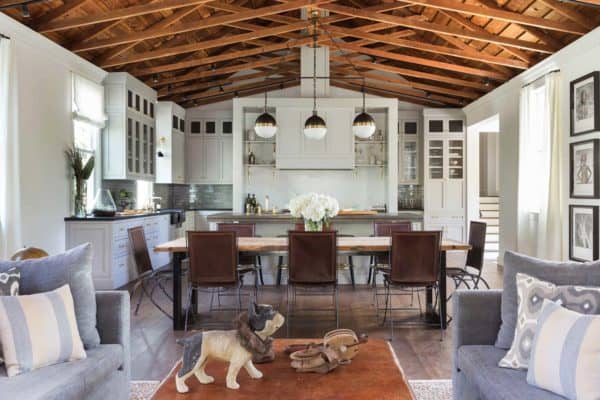


1 comment